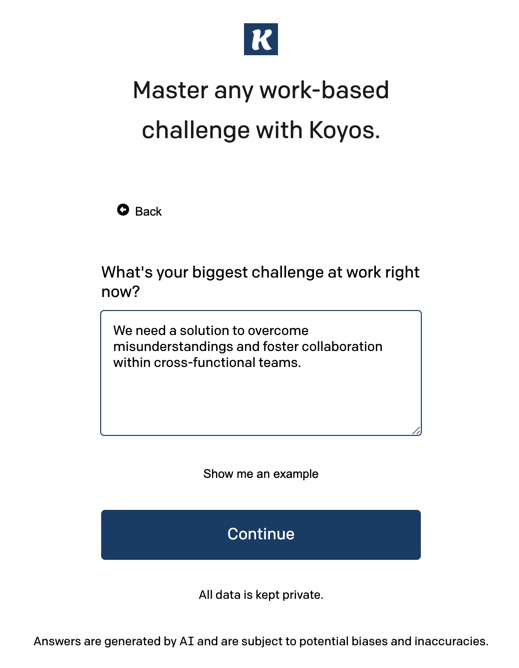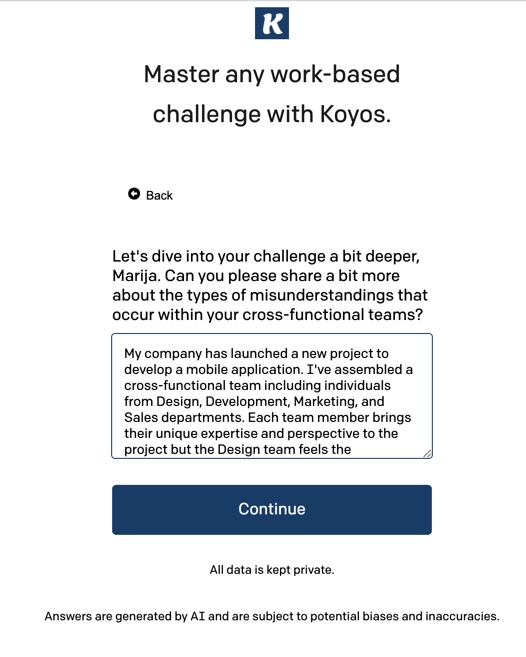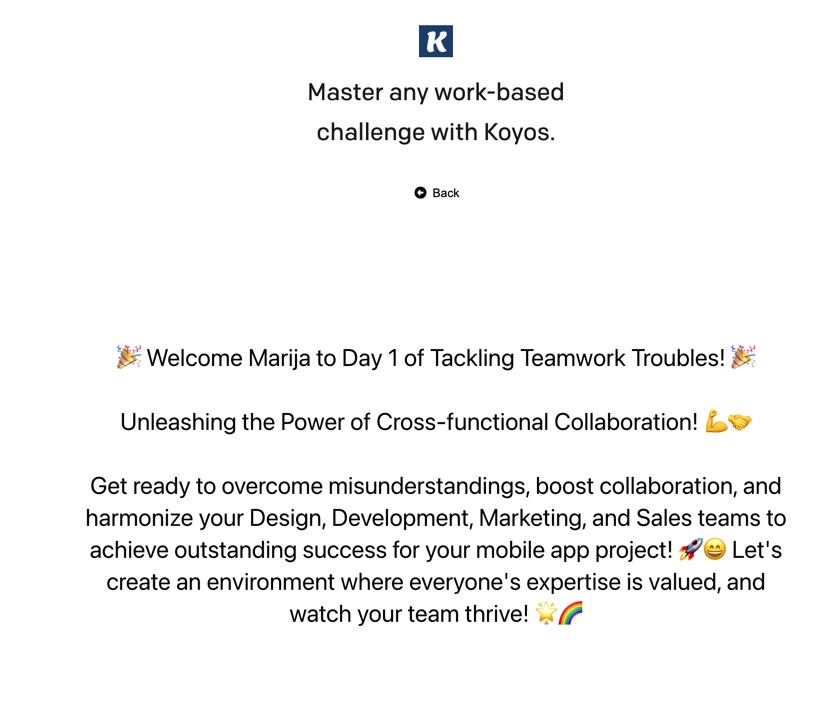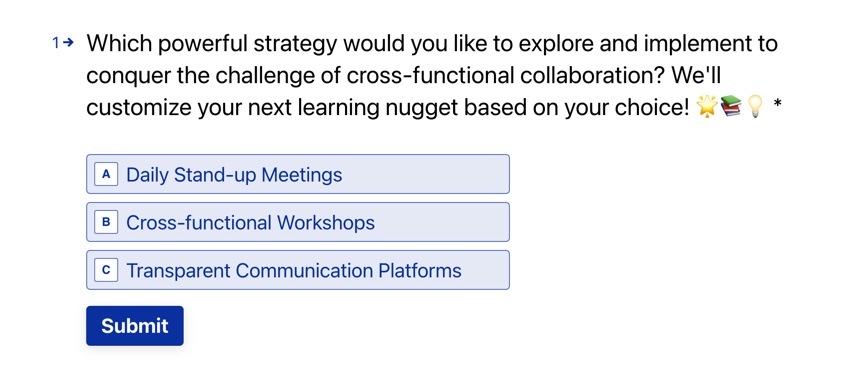Microlearning Solutions for Professionals

Summary
This initiative centred on developing personalised microlearning solutions delivered via email to help business professionals address specific workplace challenges.
Responsibilities: Instructional design, prompt writing, testing
Target audience: business professionals
Tools used: in-house developed AI tool
Learning design method: Backward Design
Client: Koyos, Sales Bootcamps
Problem Statement
Koyos, an emerging sales startup, approached me with a vision to improve corporate training. Their market research showed that traditional training methods were failing to engage employees and deliver lasting results. Through extensive customer interviews, we identified that companies were struggling with generic, time-consuming training programs that didn't address individual learning needs. We wanted to develop a solution that would make learning more personal, accessible, and immediately applicable to real workplace challenges.
Solution
We developed a microlearning system that Koyos could offer to their corporate clients. The solution transformed how companies approach employee training by delivering personalised, daily learning content via email. The system allowed individual employees to describe their specific workplace challenges, which were then converted into targeted learning objectives and bite-sized content. This approach meant companies could offer their teams flexible, personalised learning experiences that fit into their daily routines.
Process
Stage 1: Desired Outcomes
- Started with the user's challenge description
- Transformed their practical problem into a clear learning objective
- This translation step was crucial as it converted real-world need into actionable learning goals
 |  |
Stage 2: Acceptable Evidence
- Based on the learning objective, determined how to measure success
- Designed assessment methods like:
- Case study solutions
- Question responses
- These assessments would demonstrate whether the learning objective was met
Stage 3: Learning Plan
- Only after establishing objectives and assessments, the system designed:
- Learning content (definitions and descriptions of key concepts, use cases, questions, etc)
- Instructions
- Daily content delivery sequence

|  |
This approach ensured strong alignment between:
- The user's original challenge
- What they needed to learn
- How they would demonstrate learning
- What content they received
Results and Takeaways
Developing this AI-supported microlearning solution for Koyos marked my first deep dive into AI-enhanced learning design, pushing me to explore new territories in personalised learning. The project challenged me to think differently about how we can leverage AI to create truly adaptive learning experiences.
Key personal learnings:
- I discovered the art of prompt engineering, learning how to craft templates that could effectively translate user challenges into learning objectives
- The iterative process of testing and refining prompts taught me valuable lessons about AI's capabilities and limitations in learning design
- I gained deep insights into how AI can support, but not replace, careful instructional design principles
As my background is in learning strategies and education, working on this project has changed how I approach instructional design. I've got a better understanding of how to seamlessly blend AI capabilities with solid pedagogical principles, creating learning experiences that are both personalised and pedagogically sound.
You can read more about the theory behind microlearning in these articles:
What is microlearning?
Challenges and benefits of microlearning

